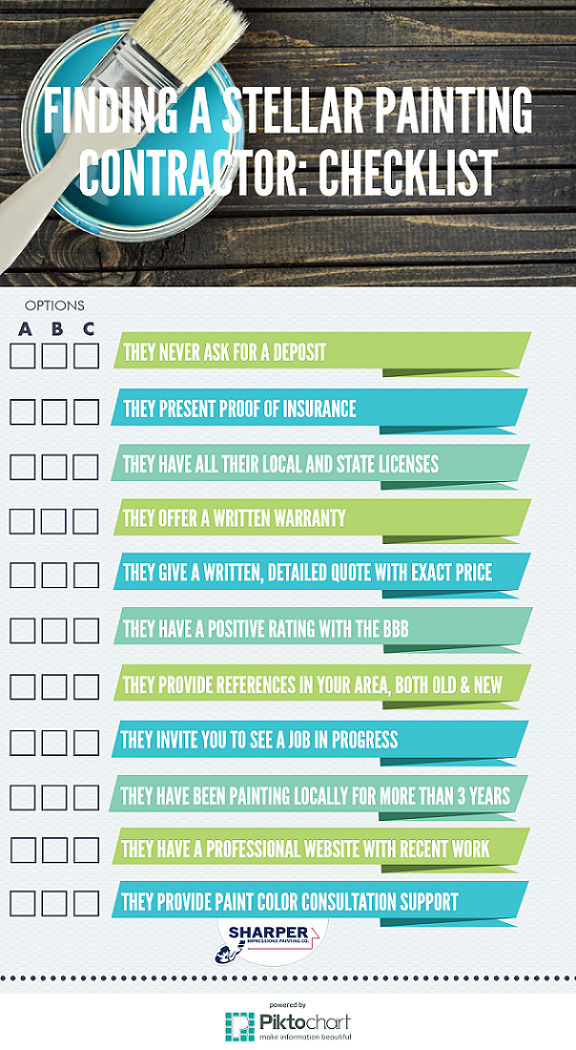The Relevance Of Weather In Commercial Exterior Paint: What You Need To Recognize
The Relevance Of Weather In Commercial Exterior Paint: What You Need To Recognize
Blog Article
Authored By-Vilstrup Kofoed
When you're planning a commercial external painting project, don't take too lightly the effect of weather on your results. You require to take into consideration aspects like temperature level, humidity, and precipitation, as they can make or damage your paint work. For https://indoorpaintersnearme44333.snack-blog.com/33227191/transforming-motivation-right-into-activity-crafting-beautiful-painted-interiors-straight-from-pinterest , did you know that perfect conditions require certain temperature level ranges and moisture degrees? Stopping working to keep an eye on these elements can cause irregular surfaces or perhaps damage to fresh paint. Comprehending these aspects is key to accomplishing a durable, expert result. So, what specific weather conditions should you watch out for?
Temperature level Considerations
When it involves industrial external paint, temperature level plays an important function in the outcome of your job. If you're painting in extreme warmth, the paint can dry as well promptly, causing issues like poor attachment and irregular surfaces. You want to aim for temperatures in between 50 ° F and 85 ° F for the very best results. Below 50 ° F, paint may not cure correctly, while over 85 ° F, you run the risk of blistering and fracturing.
Timing your project with the right temperature levels is crucial. Start your job early in the morning or later in the mid-day when it's cooler, specifically during hot months.
Likewise, take into consideration the surface area temperature level; it can be significantly greater than the air temperature, especially on sunny days. Utilize a surface area thermometer to inspect this before you begin.
If temperatures are unpredictable, watch on the weather forecast. Unexpected temperature level declines or warm front can hinder your plans. You don't wish to start painting only to have the conditions alter mid-project.
Moisture Levels
Humidity levels considerably affect the success of your business external paint job. When the humidity is too expensive, it can impede paint drying out and curing, causing a series of concerns like inadequate adhesion and finish high quality.
If you're planning a task during wet conditions, you may locate that the paint takes longer to dry, which can extend your job timeline and rise costs.
Conversely, reduced humidity can likewise position challenges. Paint might dry out as well quickly, stopping proper application and causing an unequal coating.
You'll intend to check the humidity levels carefully to guarantee you're functioning within the perfect array, commonly between 40% and 70%.
To get the best results, think about making use of a hygrometer to gauge moisture prior to beginning your project.
If https://www.womanandhome.com/homes/how-to-make-a-room-look-bigger-with-paint/ find the levels are outside the ideal range, you might need to adjust your schedule or pick paints developed for variable problems.
Constantly consult the producer's guidelines for certain referrals on humidity tolerance.
Rainfall Influence
Rain or snow can considerably disrupt your business outside paint plans. When precipitation happens, it can get rid of newly used paint or develop an unequal surface. Ideally, you intend to select days with completely dry weather condition to make certain the paint adheres correctly and treatments successfully. If you're captured in a shower, it's best to halt the job and await conditions to boost.
Furthermore, snow can be a lot more detrimental. Not only does it produce a wet surface area, but it can also reduce temperature levels, making it difficult for paint to completely dry. This can lead to concerns like peeling off or blistering down the line.
It's vital to examine the weather forecast prior to beginning your job. If rainfall or snow is predicted, take into consideration rescheduling.
Constantly bear in mind to enable ample drying time in between layers, especially if the weather remains unforeseeable.
Final thought
In conclusion, watching on the climate is important for a successful commercial external painting job. By keeping track of temperature, moisture, and rainfall, you can ensure the most effective problems for application and healing. Bear in mind to plan your job around favorable weather condition and constantly follow manufacturer guidelines. With the appropriate technique, you'll achieve a resilient, lovely surface that can stand up to the aspects. Don't let the climate catch you off-guard-- stay educated and paint smart!
